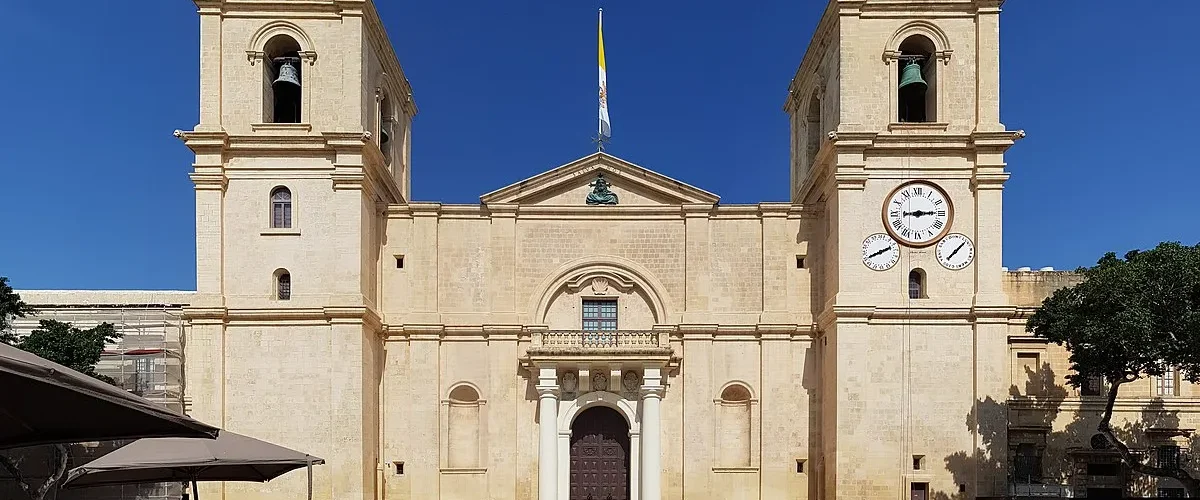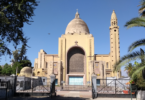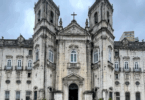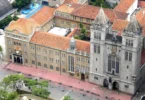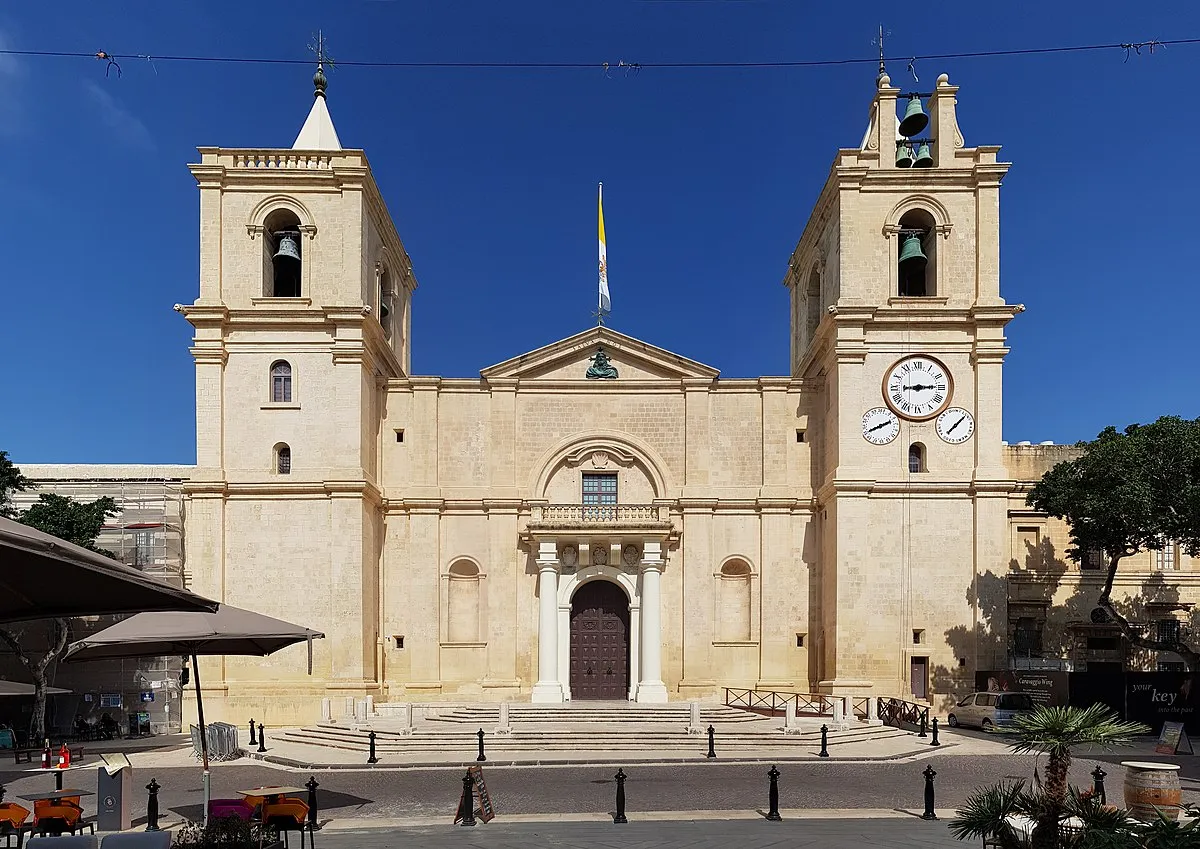
Introduction
St John’s Co-Cathedral is a Catholic co-cathedral in Valletta, Malta, dedicated to Saint John the Baptist. It was built by the Order of St. John between 1573 and 1578, having been commissioned by Grand Master Jean de la Cassiere as the Conventual Church of Saint John. The church was designed by the Maltese architect Girolamo Cassar. The interior of the church is considered to be one of the finest examples of high Baroque architecture in Europe.
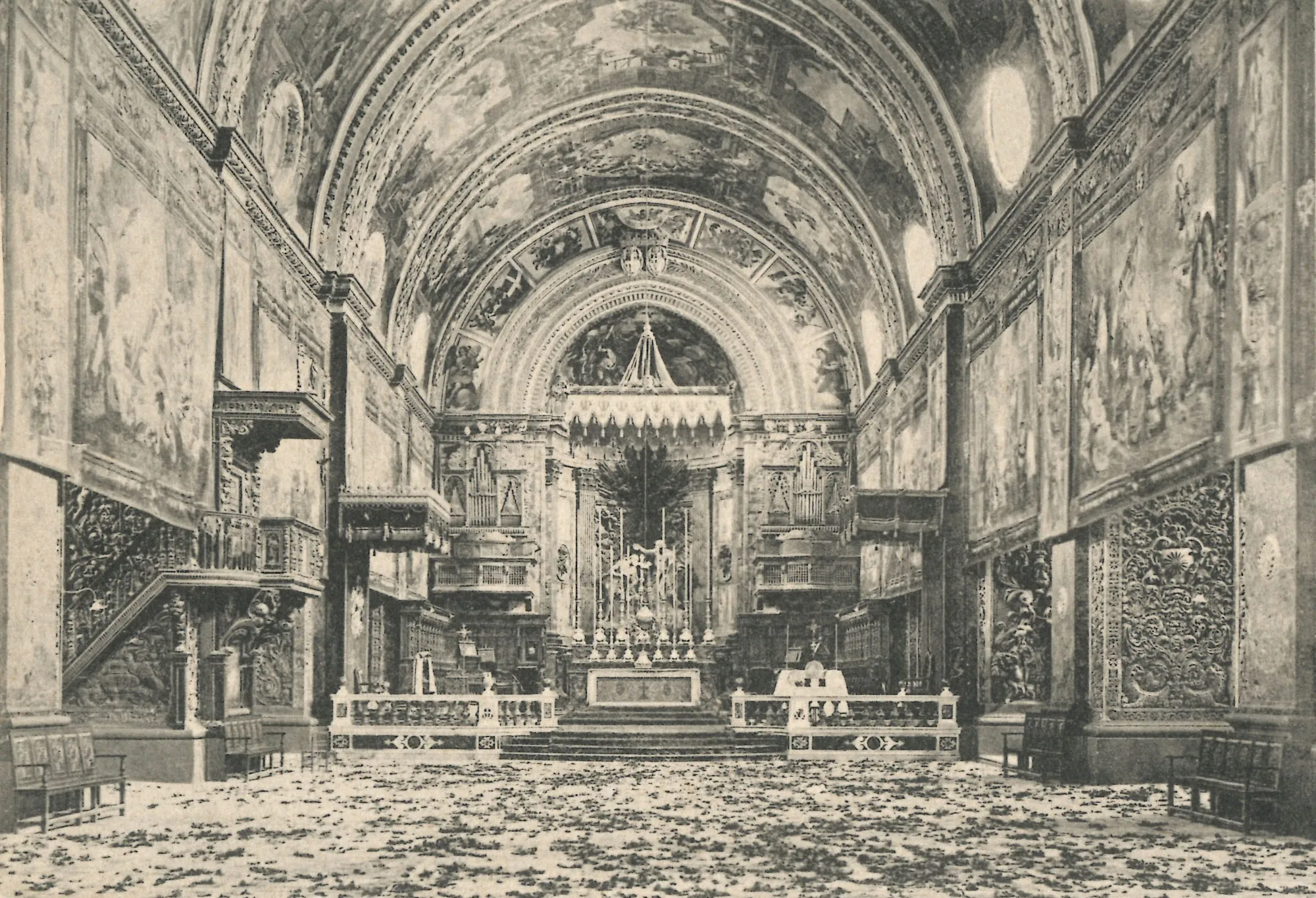
Following the Great Siege of 1565, St. John’s Co-Cathedral was commissioned in 1572 by Jean de la Cassiere, Grand Master of the Order of St. John. It was initially named, in the Italian common language of the time, as Chiesa Conventuale di San Giovanni Battista. The church was designed by the Maltese architect Girolamo Cassar. Once St. John’s was completed in 1577, it became the new conventual church of the Order instead of St. Lawrence’s Church in the Order’s former headquarters Birgu. Construction of the oratory and sacristy began in 1598, during the magistracy of Martin Garzez, and they were completed by Grand Master Alof de Wignacourt in 1604.
St. John’s remained the conventual church of the Order until the latter was expelled from Malta with the French occupation in 1798. Over time, the church grew to equal prominence with the archbishop’s cathedral at Mdina. In the 1820s, the Bishop of Malta was allowed to use St John’s as an alternative see and it thus formally became a co-cathedral.
In 1831, Sir Walter Scott called the cathedral a “magnificent church, the most striking interior [he had] ever seen.” In the mid-19th century, Giuseppe Hyzler, a leader of the Nazarene movement, removed some of the Baroque art of the cathedral, including the ornate altar in the Chapel of the Langue of France. The cathedral’s exterior was slightly damaged by aerial bombardment in 1941, during World War II, barely escaping total destruction. The contents of the cathedral had been transferred elsewhere before the bombardment, so no works of art were lost.
The cathedral was restored between the late 1980s and the early 1990s. In 2001, the St. John’s Co-Cathedral Foundation was set up to administer and conserve the cathedral and its museum. The sides of the cathedral were restored between 2008 and 2010, and a complete restoration of the exterior began in July 2014 directed by architect Jean Frendo and eight restorers. Restoration of the central part of the façade was completed in September 2015.
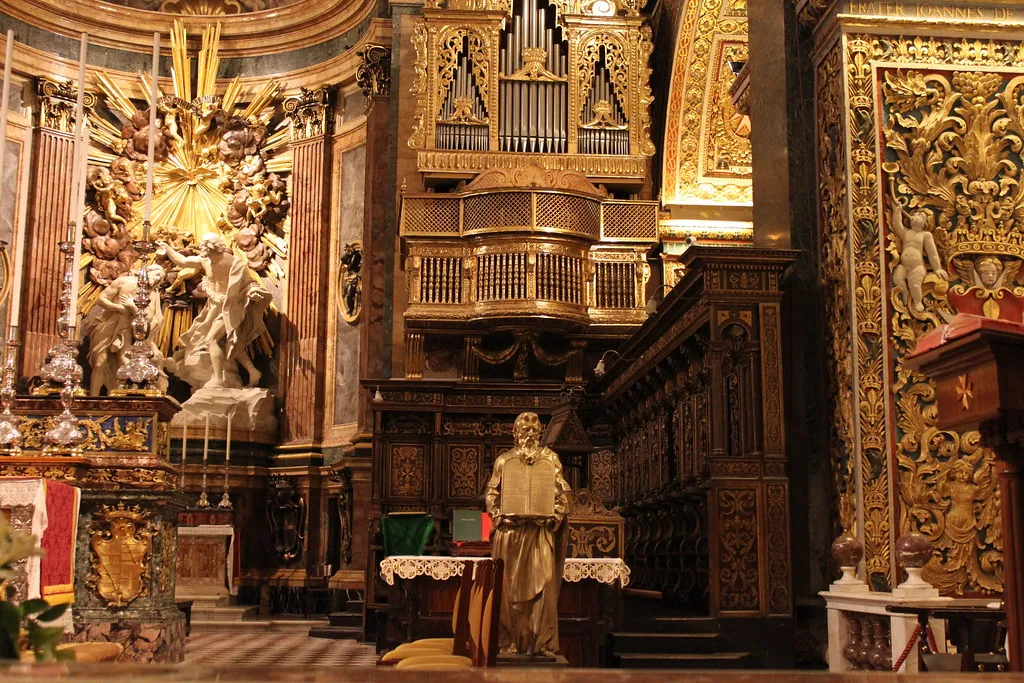
The cathedral’s interior is extremely ornate, standing in sharp contrast with the façade. The interior was largely decorated by Mattia Preti, the Calabrian artist and knight, at the height of the Baroque period. Preti designed the intricate carved stone walls and painted the vaulted ceiling and side altars with scenes from the life of John the Baptist. The figures painted into the ceiling next to each column initially appear to the viewer as three-dimensional statues, but on closer inspection we see that the artist cleverly created an illusion of three-dimensionality by his use of shadows and placement. Also noteworthy is the fact that the carving was all undertaken in-place (in-situ) rather than being carved independently and then attached to the walls (stucco). The Maltese limestone from which the cathedral is built lends itself particularly well to such intricate carving.
The whole marble floor is an entire series of tombs, housing about 400 Knights and officers of the Order. There is also a crypt containing the tombs of Grand Masters like Philippe Villiers de L’Isle-Adam, Claude de la Sengle, Jean Parisot de Valette, and Alof de Wignacourt. The cathedral’s exterior is built in the Mannerist style typical of its architect Girolamo Cassar. Its façade is rather plain but well-proportioned, being bounded by two large bell towers. The doorway is flanked by Doric columns supporting an open balcony from which the Grand Master used to address the people on important occasions.
Chapels
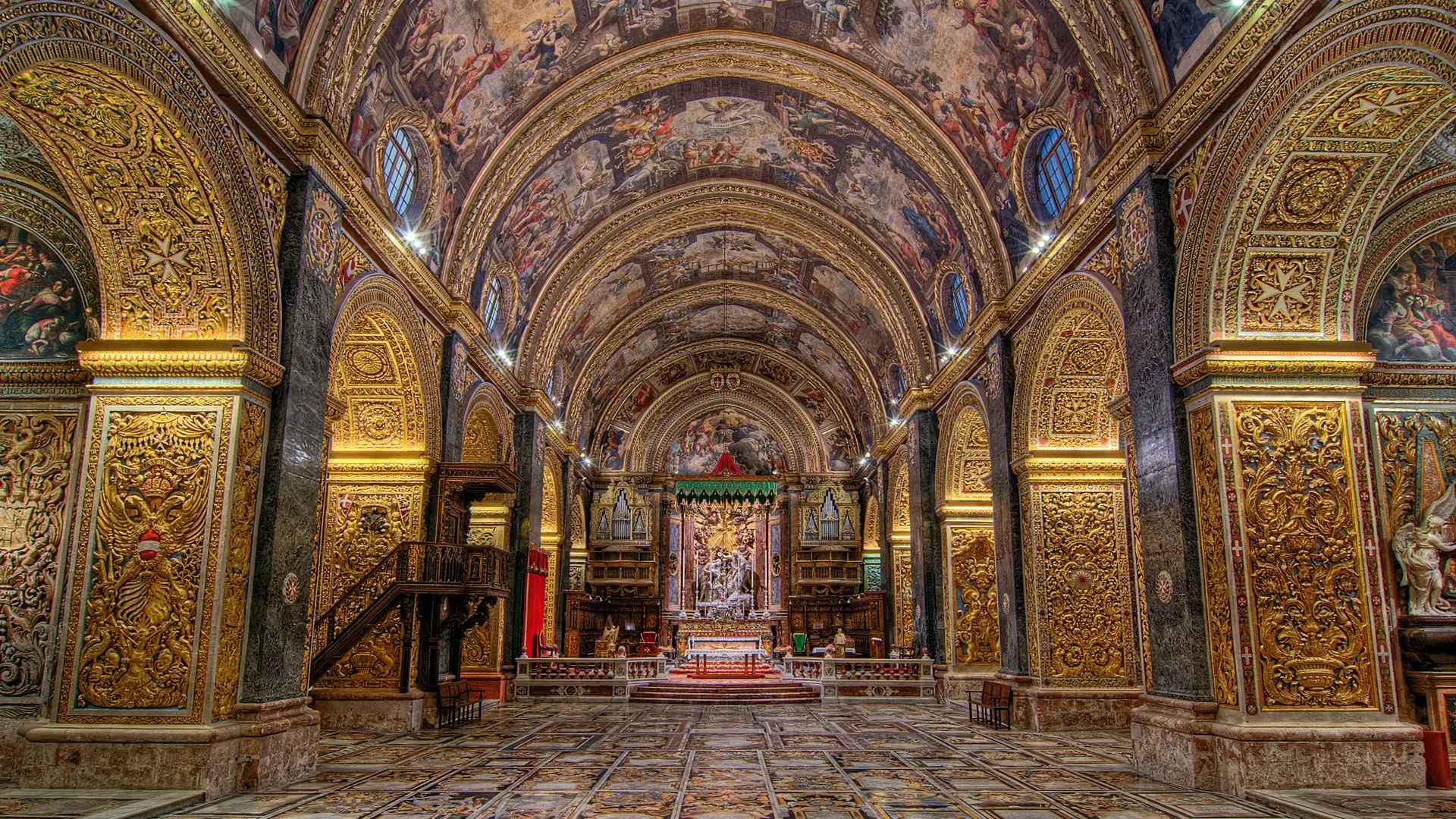
The cathedral contains nine chapels, one dedicated to Our Lady of Philermos and the rest dedicated to the patron saints of each of the Order’s eight langues.
Paintings
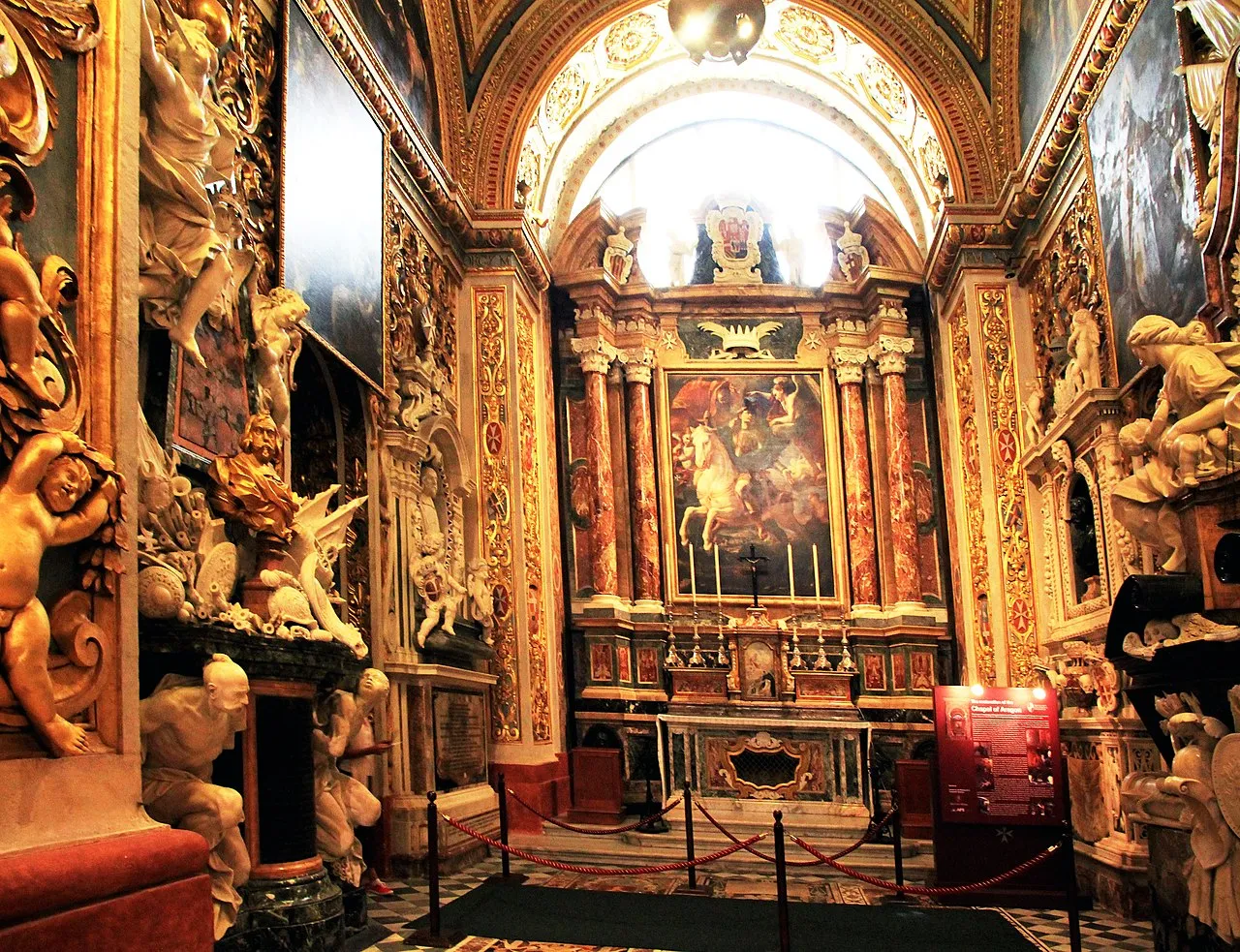
The painting depicting The Beheading of Saint John the Baptist (1608) by Caravaggio (1571–1610) is the most famous work in the church. Considered one of Caravaggio’s masterpieces, the largest canvas he painted and the only painting signed by the painter, the canvas is displayed in the Oratory for which it was painted. Restored in the late 1990s in Florence, this painting is one of Caravaggio’s most impressive uses of the chiaroscuro style for which he is most famous with a circle of light illuminating the scene of St John’s beheading at the request of Salome. The oratory also houses Caravaggio’s Saint Jerome Writing.
Feast Day
Feast day : June 24th
On Thursday 24th June, at 18:30, the Solemnity of the birth of St John the Baptist, the President of the Foundation of St John’s Co-Cathedral, Prof. Mgr Emmanuel Agius, will celebrate a High Mass at St John’s Co-Cathedral, Valletta.
Saint John Co-cathedral Opening Time
Monday to Friday :
9:30am – 04:30pm
Saturday :
9.30am – 12.30pm
Saint John Co-cathedral Mass Timing
Monday to Friday :
08:30
Saturdays :
08:30, 05:30 (1 November – 30 June),
06:00 (1 July – 31 October)
Sundays :
07:45am, 09:15am, 11:00am,
12:00 pm (Except August & September)
05:30 pm (1 November – 30 June),
06:00 (1 July – 31 October)
Contact Info
Address :
St John’s Co-Cathedral
St John’s Square
Valletta, VLT 1156, Malta
Phone : +356 2122 0536
Accommodations
Connectivities
Railway
Malta Railway Station to Saint John’s Co-Cathedral distance between 1 hr 30 mins.
Airway
Malta Airport (MLA) to Saint John’s Co-Cathedral distance is 9 km.

